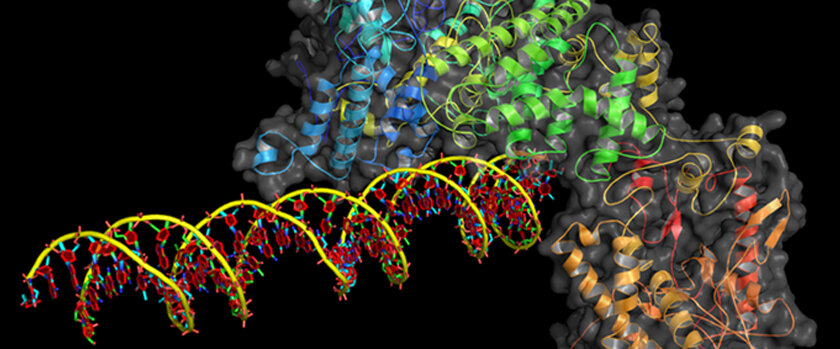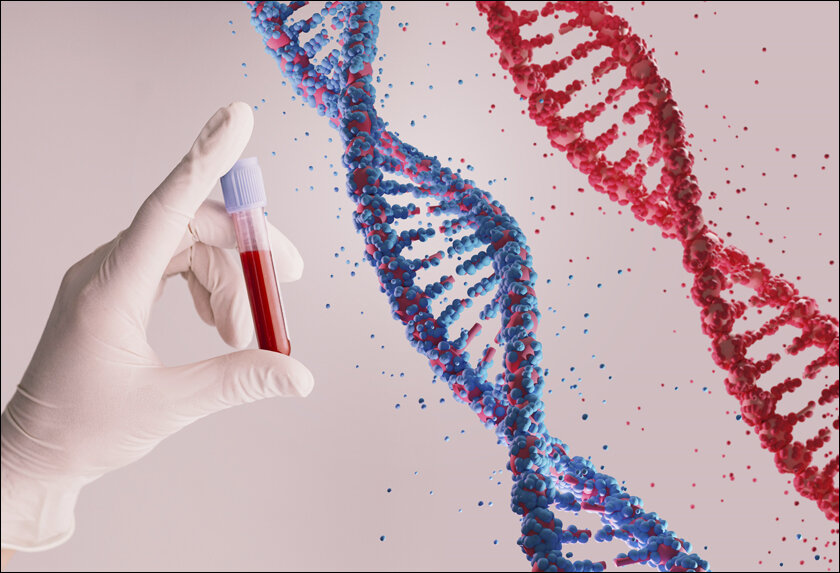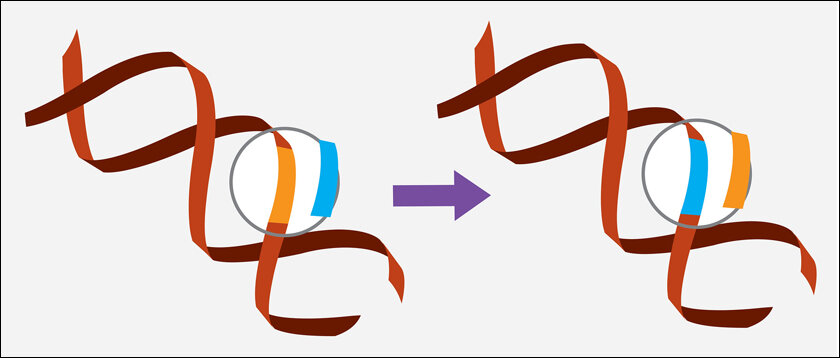The problem, however explains Nigel, is that when you mess around with the genetic sequences of a human embryo, you could be causing a number of unknown mutations at the same time.
Can you imagine a future where you could edit your genes to remove unwanted inherited diseases, conditions, or traits? While one scientist has already spent three years in jail for editing genes in human embryos to create “designer babies,” a future where this practice becomes commonplace is not unthinkable anymore.
Gene editing is the process of using “molecular scissors” to cut away an unwanted strand of DNA and replace it with “healthy gene material.” Our DNA comprises 4 essential molecules named A, T, C, and G, and different permutations and combinations of these molecules make up the code for our genes. When it comes to genetic diseases or disorders, a simple “misspelling” could be the difference between vulnerability and immunity.

CRISPR
Though gene editing has been around for a while, it wasn’t until the CRISPR Cas9 technique was documented in 2012 that things really took off. What that means is things went from “We may be a hundred years away from trying this on humans” to “Oh my God that Chinese guy actually did it” in a matter of a decade. That’s an incredible leap, and even though the scientist in question has admitted that he jumped the gun on this one, there is still an amount of shock and awe associated with his name.
What made this possible was the CRISPR (Clustered Regularly Interspaced Short Palindromic Repeats) technique that mimics the way bacterial defence systems attack invading viruses and disables their genes.
That’s right, CRISPR is a technique that already exists in nature and has been readapted by us to edit the genes of humans, plants, or animals. On a side note, if you do a quick Google search on genetically modified animals or “glow in the dark” animals, to say you would be surprised at the results would be an understatement.
Everything from pigs, sheep, monkeys, dogs, and even rabbits that have been genetically modified to glow in the dark already exists. Can’t find your sheep at night? No worries, we now have glowing sheep! In addition to loads of fruits and vegetables that have been genetically modified to be bigger and more resilient, there are also silkworms that have been genetically modified with spider genes to create spider silk!

Gene Therapy
As we already mentioned, sometimes the sequence of our genetic code gets mutated or mixed up causing a number of genetic disorders that can theoretically easily be fixed by gene therapy. In fact, there are over 6,000 rare genetic disorders caused by single “misspellings” or mutations that can be corrected using CRISPR. The problem, however, is that when you mess around with the genetic sequences of a human embryo, you could be causing a number of unknown mutations at the same time.
Gene therapy, on the other hand, is the process of delivering therapeutic DNA directly to a patient’s cells through medication in order to get it to replace the mutated DNA. Other procedures include using reprogrammed stem cells in order to correct unwanted gene mutations.
While designer babies and the laws, morals, and ethics surrounding the topic may still be a long way off, the first gene therapy treatment using CRISPR could possibly be approved later this year. The treatment is for people with sickle cell disease where a mutated gene called BCL11A suppresses foetal haemoglobin production after birth.
The process involves delivering edited or corrected genes to a patient’s cells via a non-infective virus in order to correct or silence the mutation and is undergoing Phase 2 clinical trials. Another method with a positive initial result involves modifying a patient’s blood-forming stem cells with edited genes in order to correct the sickle cell disease mutation. If any of these procedures work and get approval, the future of medicine could look very different.

CyDENT
Gene editing has grown leaps and bounds in the last ten years thanks to the CRISP Cas9 technique but that doesn’t mean there isn’t room for improvement. In addition to the problem of the body mistaking the Cas9 protein as a foreign body and launching an attack, there are also occasional problems associated with a guide RNA that is required to transport the Cas9 protein to the affected area.
In response to these issues, Chinese researchers claim to have developed a more effective gene editing tool called CyDENT which can perform “strand-specific” gene editing “without any cuts.” This is achieved by foregoing the guide RNA approach in favour of a protein signal approach to guide the gene editor to the target cell. This new development holds a lot of promise for people suffering from everything from Huntington’s disease, haemophilia, cancer, or anything caused by gene mutations.
In case you missed:
- A Glowing Plant Could Be Your New Night Lamp for $29
- Researchers develop solar cells to charge phones through their screens
- Age reversal technologies in 2024, longevity escape velocity by 2029?
- This computer uses human brain cells and runs on Dopamine!
- Lab-Grown Brain Thinks It’s a Butterfly: Proof We’re in a Simulation?
- Scientists establish two-way Lucid Dream communication!
- Tiny robots made from human cells can heal wounds!
- Toyota’s Liquid Hydrogen-Powered “GR H2” Race Cars
- Neuralink Blindsight and Gennaris Bionic eye, the future of ophthalmology?
- Could Dimming the Sun Be the Solution to Global Warming?









